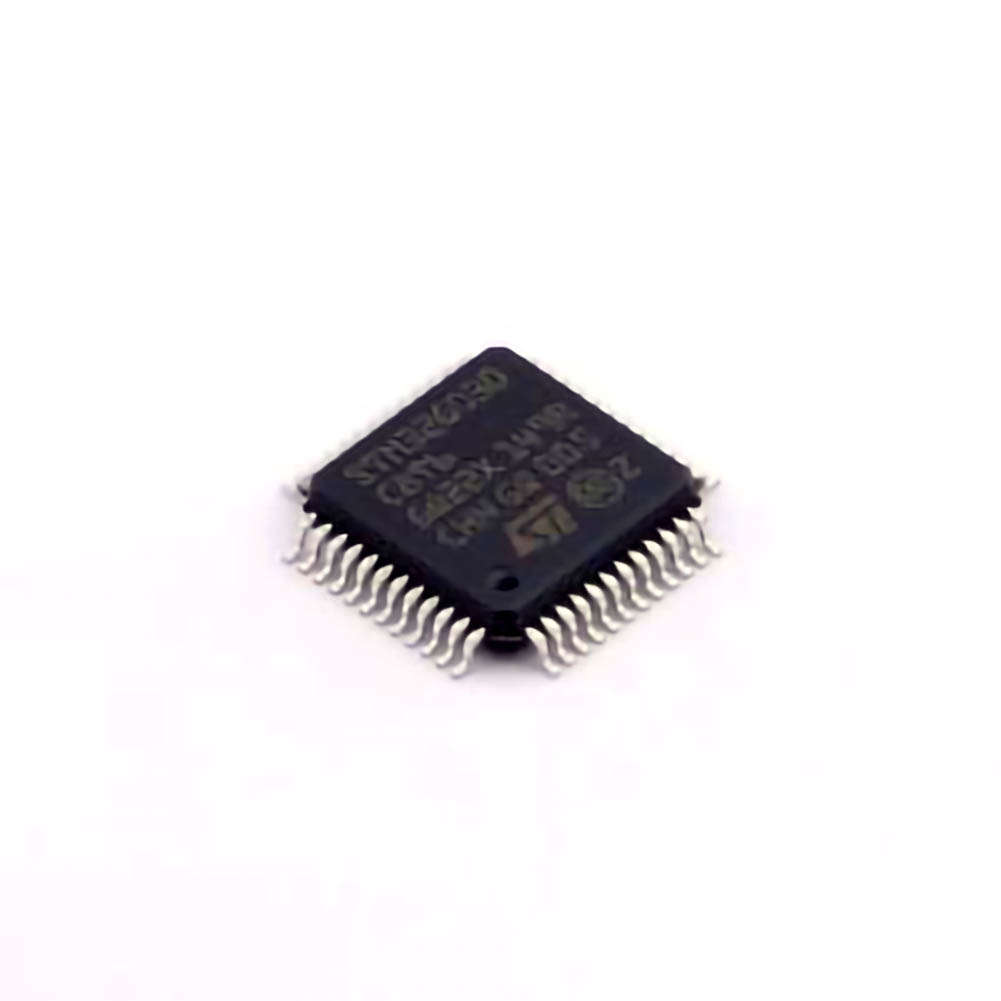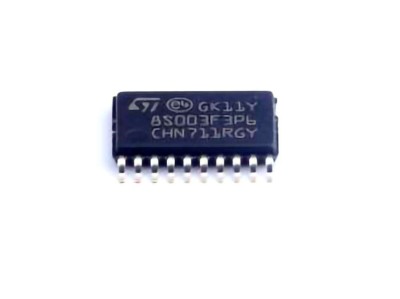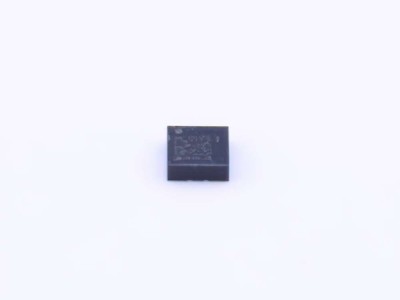
Understanding the STM32G030C8T6 Microcontroller
The ST STM32G030C8T6 is a Power ful and versatile microcontroller from STMicroelectronics, based on the ARM Cortex-M0+ core. It offers a variety of features that make it suitable for low-power applications, including a wide range of peripherals, advanced timers, and enhanced analog functions. However, like any microcontroller, developers may encounter issues during development. Whether you're working on an embedded system, a robotics project, or a consumer device, knowing how to troubleshoot common problems with the STM32G030C8T6 is essential.
This article provides insights into common troubleshooting issues faced by developers working with the STM32G030C8T6 and offers solutions that can help improve the performance and reliability of your projects.
1. Power Supply Issues
Symptoms: One of the most common issues that can cause the STM32G030C8T6 to malfunction is a faulty or unstable power supply. When the microcontroller doesn’t receive a clean or adequate voltage, it may reset, behave erratically, or fail to boot up altogether.
Solution:
Check the Voltage: The STM32G030C8T6 operates within a voltage range of 2.7V to 3.6V. Ensure that the supply voltage is stable and within this range.
Use a Voltage Regulator: If you're using a battery or an unstable power source, consider using a low-dropout regulator (LDO) to stabilize the input voltage.
Capacitors for Decoupling: Adding decoupling capacitor s near the power pins of the microcontroller can help smooth out voltage fluctuations and reduce noise. Typically, a 100nF ceramic capacitor and a 10uF electrolytic capacitor are recommended.
2. Clock Configuration Problems
Symptoms: The STM32G030C8T6 uses an internal clock by default, but incorrect clock configuration can lead to erratic behavior. For instance, if the system clock (HCLK) is not properly configured, the microcontroller may run at an unintended frequency, causing the system to operate slowly or cause Communication issues.
Solution:
Configure the Clock Properly: Double-check the clock setup in your code, ensuring that you're configuring the High-Speed External (HSE) crystal oscillator (if used) and the Phase-Locked Loop (PLL) correctly. Ensure that the PLL multiplier and divider settings are appropriate for your application.
Use STM32CubeMX: STM32CubeMX is a powerful configuration tool that can help you set up the microcontroller's clocks easily. It can generate initialization code, saving you time and reducing human errors.
Check the Clock Source: Verify the clock source selection in the STM32G030's system configuration register. Ensure you’re using either the internal or external clock as per your design requirements.
3. Debugging and Programming Errors
Symptoms: Debugging is an essential part of development, but sometimes the STM32G030C8T6 may fail to respond to debugging commands or programming attempts. This issue can occur due to a variety of reasons, including incorrect connections, faulty debugger configuration, or issues with the bootloader.
Solution:
Check Debugger Connection: Verify that your debugger (such as ST-Link or J-Link) is properly connected to the SWD (Serial Wire Debug) interface . Also, ensure that the debug interface is enab LED in your code.
Revisit Boot Configuration: If you're unable to debug or program the microcontroller, check if the BOOT0 and BOOT1 pins are set incorrectly. These pins control the bootloader mode, and improper settings may prevent programming. Ensure that BOOT0 is set to 0 (for boot from flash Memory ) and BOOT1 is set to 0 (for default boot).
Reset the MCU: In some cases, resetting the STM32G030 can clear the issues, allowing you to successfully connect to the debugger.
4. I2C or SPI Communication Failures
Symptoms: Communication failures are common when working with I2C or SPI peripherals on the STM32G030C8T6. These issues may manifest as fai LED data transfers, incorrect data values, or timeouts in communication.
Solution:
Check Pull-up Resistors (I2C): For I2C communication, ensure that the SCL and SDA lines have appropriate pull-up resistors, typically 4.7kΩ to 10kΩ, to ensure proper signal levels.
Check Clock Speeds: Ensure that the clock speed for I2C or SPI does not exceed the maximum allowed for the peripheral or the connected devices. Adjust the speed in the STM32CubeMX or directly in your code.
Verify Peripheral Configuration: Use STM32CubeMX to double-check the configuration of the I2C or SPI peripherals, including the correct addressing mode and operating mode (master/slave).
Check for Bus Conflicts: In I2C systems, verify that there are no address conflicts. In SPI systems, ensure the chip select (CS) pin is managed correctly to avoid bus contention.
5. Watchdog Timer Resets
Symptoms: If your STM32G030C8T6 is resetting unexpectedly, the cause could be an incorrectly configured or improperly handled watchdog timer. The watchdog timer is designed to reset the microcontroller in case of a system hang or freeze, but incorrect handling can cause unintentional resets.
Solution:
Watchdog Configuration: Review the initialization of the watchdog timer and ensure it's configured correctly for your application. If you're using the Independent Watchdog (IWDG), make sure to feed it periodically in your main loop to prevent unintended resets.
Use of the Window Watchdog (WWDG): If you're using the WWDG, ensure that the window period is set properly. If the watchdog is not reset within the allowed time window, it will trigger a reset.
Disabling the Watchdog: If the watchdog is causing issues during debugging, consider disabling it temporarily during development. Just ensure you enable it again before finalizing the project.
6. ADC Accuracy and Calibration Problems
Symptoms: The STM32G030C8T6 features a 12-bit ADC, which can be prone to inaccuracies due to various factors such as reference voltage drift, improper sampling, or noise. Incorrect readings from the ADC can lead to issues in sensor data acquisition or analog signal processing.
Solution:
Calibrate the ADC: The STM32G030C8T6 ADC can be calibrated to ensure accurate readings. Use the built-in calibration features and refer to the STM32CubeMX for ADC calibration settings.
Check Reference Voltage: Ensure that the reference voltage used for the ADC is stable. If you’re using an external reference, check the power supply and any voltage dividers used to generate this reference.
Add Filtering: Adding a low-pass filter (a simple RC circuit) to the input of the ADC can help filter out high-frequency noise, improving the stability of the readings.
7. GPIO Configuration and Pin Issues
Symptoms: GPIO pin misconfigurations can cause the STM32G030C8T6 to behave unpredictably. This may result in the failure of peripheral functions such as LEDs, switches, or communication lines.
Solution:
Check Pin Modes: In the STM32G030C8T6, GPIO pins can be configured for input, output, analog, or alternate function. Verify that the pins are configured correctly in your code. For example, if you're using a pin for UART or SPI communication, ensure that it is set to the alternate function mode.
Drive Strength: Ensure the pin’s drive strength is adequate for the connected components. For example, for high-speed communication, you may need to increase the drive strength.
Pull-up/Pull-down Resistors: If the pins are set as inputs, check if appropriate pull-up or pull-down resistors are enabled to ensure stable logic levels.
8. Flash Memory Programming Errors
Symptoms: Flash memory issues can lead to the inability to store or retrieve data properly. This is a critical problem in embedded applications where non-volatile memory is used for storing settings or firmware.
Solution:
Check Flash Integrity: Ensure that the flash memory is correctly initialized and accessible. Use STM32CubeMX or your IDE to verify the memory map and settings.
Program with STM32CubeProgrammer: For reliable flash programming, use STM32CubeProgrammer to write and verify data. If you're encountering issues during flashing, try using the “mass erase” function to clear the flash memory before reprogramming it.
Erase Pages Properly: The STM32G030C8T6 uses a page-based flash memory structure. Ensure you're erasing entire pages before writing to them, as writing to non-erased memory can lead to corruption.
9. Temperature Sensitivity and Environmental Conditions
Symptoms: Environmental factors such as temperature fluctuations or high humidity levels can cause erratic behavior or hardware failures. The STM32G030C8T6 is designed to operate within a temperature range of -40°C to 85°C, but excessive heat can lead to thermal issues.
Solution:
Thermal Management : Ensure that the microcontroller operates within its specified temperature range. If you're using it in an environment with fluctuating temperatures, consider adding heat sinks or improving ventilation to maintain a stable operating temperature.
Use External Sensors : If your application is sensitive to environmental factors, consider using external temperature or humidity sensors to monitor conditions and adjust system parameters accordingly.
10. General Debugging Tips
Symptoms: If you're facing persistent issues that don't fit into the categories mentioned above, general debugging strategies can help you isolate and fix the problem.
Solution:
Use STM32CubeIDE's Debugging Tools: The STM32CubeIDE offers advanced debugging features, such as breakpoints, step-through execution, and variable inspection. Use these features to track down hard-to-find bugs.
Check Firmware Libraries: Ensure that you're using the latest STM32 HAL (Hardware Abstraction Layer) libraries. Older versions may contain bugs or incompatibilities.
Look for Known Issues: Before proceeding, check the official STM32G030C8T6 reference manual and STMicroelectronics' community forums for known issues or firmware updates.
Conclusion
By understanding and applying the solutions provided in this article, developers working with the STM32G030C8T6 microcontroller can resolve common troubleshooting issues more efficiently. Whether you're dealing with power supply problems, clock configuration errors, or communication failures, these practical fixes will help you streamline your development process. With patience and the right tools, you can overcome the challenges and unlock the full potential of this versatile microcontroller for your embedded projects.
If you're looking for models of commonly used electronic components or more information about STM32G030C8T6 datasheets, compile all your procurement and CAD information in one place.
( Partnering with an electronic component supplier) sets your team up for success, ensuring that the design, production and procurement processes are streamlined and error-free. (Contact us) for free today.


